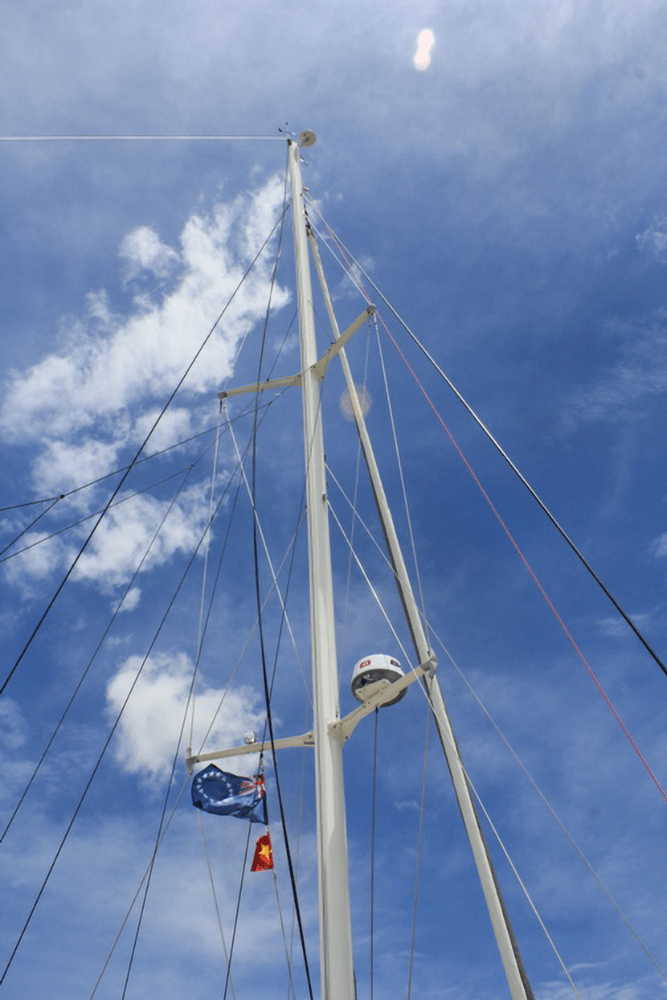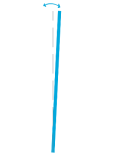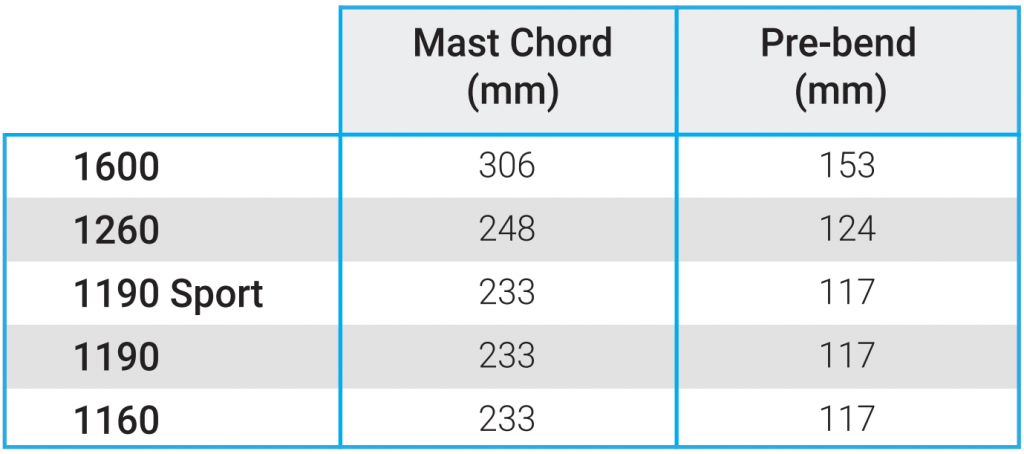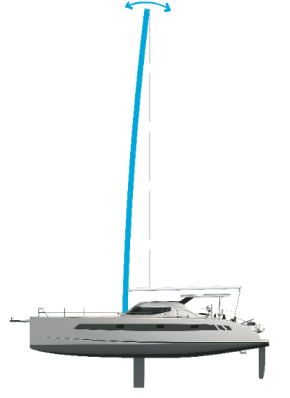How to tun your rig – Seawind Catamaran
While every Seawind is delivered with a well-tuned rig ready to go sailing, occasionally it will become necessary to adjust and tune the mast and rigging. Mast tuning is, in reality, a fairly simple process that many people avoid for fear of doing wrong. The result of this is these boats are sailed with loose rigging and improper mast structure, far worse than had the perfect tuning not been achieved with a reasonable attempt at keeping the rig tuned. This article aims to act as a guide to both demonstrate the ease of tuning your rig whilst also giving you the basics on how to proceed.
How to tun your rig – Seawind Catamaran
How to tun your rig – Seawind Catamaran
A number of rig types have been used on Seawinds over the years, in this article, we shall focus on the two types used on current models. These are a single spreader fractional rig (1160, 1190, 1260) and double spreader fractional rig (1190 Sport, 1370, 1600). Both follow the same basic principles; however, where one differs from the other we shall clarify in the steps that follow.
If tuning your rig for the first time, or retuning a sloppy rig, the first step shall be to back off all the turnbuckles to release pressure and enable you to start from a blank canvas. When doing so, do not unwind turnbuckles past their safe bury limit (there should remain at least 3 threads exposed protruding past the turnbuckle end). Of course if you are needing just a minor adjustment this can be performed without backing off all rigging, simply skip ahead to the section of interest however this guide shall work through all steps based on a completely untuned setting.
Notes: When adjusting rigging screws, it is always good practice to attach a spare halyard to a pad eye or horn cleat near the stay you are adjusting. Apply some pressure and clutch off as a safety backup.
COLLUMN
This is the straightness of the mast when looking at the forward or aft face. The mast should stand straight, it should not lean to either side of the boat and should be perfectly in column with no curves along the way.
rig tunning guide – Seawind Catamaran
Your mast is leaning to one side? First double check that it is your mast that is leaning and not your boats heel. Take a spare halyard to a datum point on the port chainplate and then again on stbd. The halyard should reach both datum’s with equal tension applied. If one side does not touch, or is too loose then you shall need to adjust your cap shrouds to pull the mast back to centerline.
Your mast has a curve or S bend when looking up the forward face: This can be adjusted by tightening or loosening the diamonds accordingly. On a double spreader rig you will have two sets of diamonds, start by adjusting the upper diamonds first then work down from there.
PRE-BEND
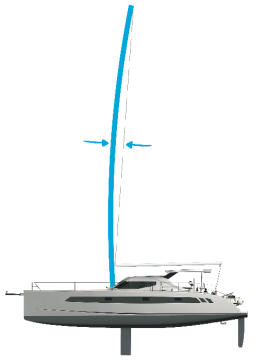
Pre-bend is the natural fore-aft curvature of the mast when static and unloaded. To check pre-bend, take the main halyard and attach it to the gooseneck, then pull tension on the halyard to remove any slack, thereby producing a straight line from head to gooseneck. This is an easy way to visualize the amount of pre-bend on your mast.
On all aluminum Seawind masts the pre-bend is set at 50% of the total mast section chord (length). IE, on an aluminum mast with a fore – aft length of 300mm the pre-bend should be set at 150mm.
The following table can be used when tuning your 1160, 1190, 1260 or 1600:
To apply or adjust pre-bend begin by first tensioning the outer diamonds. Adjust each side with equal turns to the turnbuckles. With the correct pre-bend achieved, continue to adjust the diamond wires to get the mast straight in a sideways plane (in column). Second, take up the inner diamonds equally until they are firm and sharing the load. For advanced tuning this pre-bend should match the cut of the mainsail.
RAKE
Rake is the term given to the fore or aft lean of the mast. This fore-aft lean (rake) effects the balance of the helm by shifting the center of effort (COE) further forward or aft of the center of lateral resistance (CLR). Adding rake (leaning the mast further aft) will add weather helm to the boats balance, whereas standing the mast up straighter reduces weather helm, or adds lee helm, depending on the extent of the movement. Changing the rake on a Seawind is as simple as adjusting the forestay and cap shroud turnbuckles.
When adjusting rake for optimum results the rake can be finely tuned after some trial and error setting and re tuning to achieve a setting that provides some weather helm upwind in light air, without becoming unbearable in a blow. You want to ensure that if you were to leave the helm the vessel would gradually round up and stall into the breeze, thus not becoming out of control. Consideration should also be made for the optioned sail wardrobe, a Seawind optioned with a screecher or Code-0 should be set with more rake than a vessel with main and jib only. Doing so will add more weather helm when sailing main and Jib only but will prevent lee helm when sailing with the screecher.
Rake can be measured by attaching a weight such as a wrench or hammer to the main halyard and taking a measurement from this forward to the gooseneck. On a vessel sitting on it’s designed waterline this measurement corresponds to the settings outlined in the following table.
How to tun your rig – Seawind Catamaran
The rake of your sailboat can be adjusted by simply tightening or loosening the forestay. This should be done whilst also proportionately adjusting the cap shrouds.
RIG TENSION
The rig tension on your catamaran should be firm, but not overly tight. The best way to determine correct tension is to watch the leeward shrouds when sailing. These should become slightly loose when sailing however should not be loose enough to appear sloppy.
To tighten the rigging, begin by taking up the outer side stays on both sides evenly, changing each side a few turns at a time. Do not over tension; take them up evenly until the stays feel firm. While there are tools such as loose gauges available to evaluate tension, these typically do not work on the wire sizes typically used on multihulls. To check whether you have achieved appropriate firmness, grasp the shroud at standing height and rotate the shroud in an arc. You should be able to rotate the stay in no more than a 100mm diameter.
Last, take up the lower stays evenly until they are firm against the pre-bend provided by the spreader diamonds. Their purpose is to contribute to holding the mast in column with the pre-bend and stop it from “pumping” when under sail. If when sailing you notice the mid or lower sections of the mast moving this likely indicates the lowers require adjustment. Like the outer shrouds you should be able to rotate the stay in no more than a 100mm diameter at standing height.
SAFETY
When adjusting rigging screws it is always good practice to attach a spare halyard to a pad eye or horn cleat near the stay you are adjusting. Apply some pressure and clutch off as a safety backup. After adjusting your rigging, please take care to lock off all the locking nuts and replace any safety pins removed before tuning. On an older boat your rigging should have already been stretched in and should maintain its tension for a reasonable period, as such we recommend inspecting your rig tune every 6 months. On a new vessel you will need to monitor and adjust your rig tune more frequently as the stainless rigging wire stretches in. It is recommended for the first 12 months of owning a new catamaran you inspect rig tune at 1 month, then 6 months then every 6 months after.
How to tun sailboat rig – Seawind Catamaran
READ MORE: CRUISING TIPS: Docking
READ MORE: SAIL GUIDE SELECTION
Fine tunning sailboat rig – Seawind Catamaran
